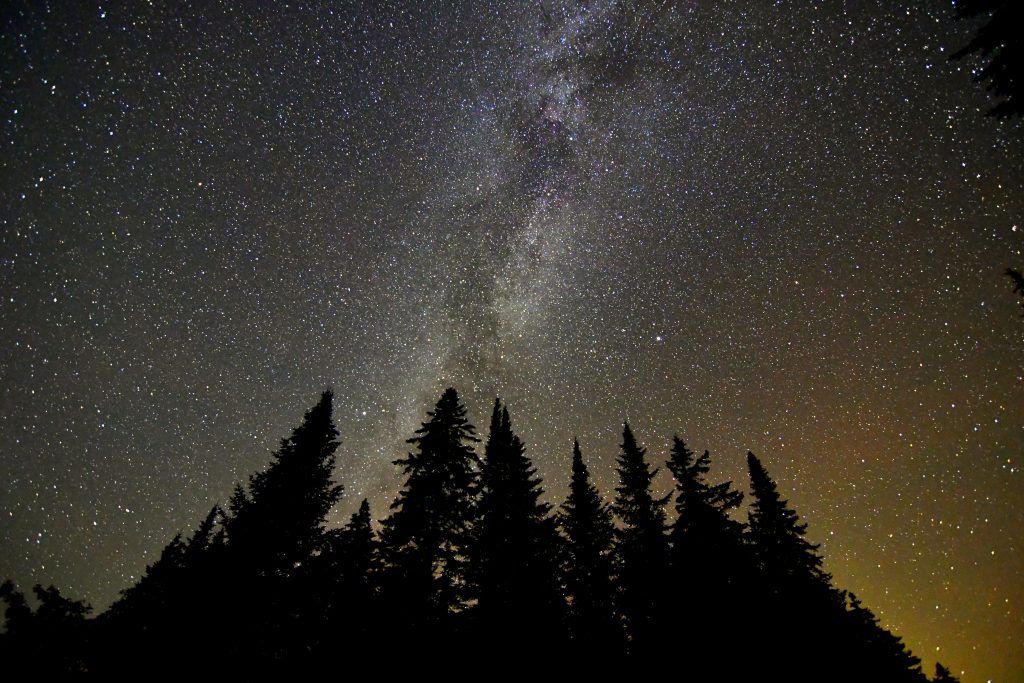Dark Skies and the Milky Way Aren’t the Only Reasons to Paddle the Allagash
 Allagash Wilderness Waterway (AWW) is a spectacular 92-mile long river and lake area like no other waterway in the eastern United States. To those who are willing to get off the beaten path and unplug from technology it offers remarkable natural beauty, an opportunity to experience solitude and escape from the constant demands of our busy world.
Allagash Wilderness Waterway (AWW) is a spectacular 92-mile long river and lake area like no other waterway in the eastern United States. To those who are willing to get off the beaten path and unplug from technology it offers remarkable natural beauty, an opportunity to experience solitude and escape from the constant demands of our busy world.
Many waterway visitors tell us how looking at the stars from the shore of the lake at night was the highlight of their trip. Comments like, “I never knew how bright the stars could be,” or “I felt so small looking at the vastness of the Milky Way.” The night sky of the Allagash is free from the light pollution that is common in most of the lower 48 states. Even after all these years of working in Maine’s north woods, I often find myself staring up at the sky in wonder at God’s creation on a cool cloudless night in the Allagash.
There are many other natural sights and sounds that people can experience on an Allagash adventure. People love seeing wildlife, especially the majestic Maine Moose. Moose are commonly seen along the waterway feeding on water plants during late summer and early fall. Seeing a bull moose up close and hearing the water run off its antlers as it brings his head out the water is experiencing nature in the wild.
One of the best places to see wildlife on the AWW is on the upper end of Umsaskis Lake where the river runs into the lake. This area teams with all sorts of wildlife, including waterfowl, beaver, muskrat, mink, otter, moose and the occasional threatened lynx. Bald eagles are now so frequently seen along the waterway that it doesn’t even seem special!
Another frequent comment made by first time visitors to the waterway is that they have never seen so many trees. The unbroken forested shoreline and free flowing river are becoming rarer even in the Maine woods. Great effort is made by waterway managers and adjacent landowners to ensure that viewsheds are protected within a mile of the watercourse.
About 15- miles from the Town of Allagash, the river plunges over Allagash Falls, the spectacular climax of any waterway canoe trip. There are several campsites located at the falls. It is one of the busiest camping locations on the waterway. Fading off to sleep by the sound of water cascading over the 40-foot falls is the formula for a good night’s sleep!
There is no cellphone coverage or internet connectivity within the AWW. This may seem like a hardship or negative thing to many, but I sincerely believe that this is a good thing. Disconnecting from electronic devises for a time can help us appreciate the natural world and rejuvenate our relationships.
The AWW is truly a national treasure, protected from development and managed to enhance the wilderness character of this wild and scenic river. In fact, the boarding house and storehouse both located at Churchill Depot have recently been added to the National Register of Historic Places. If you want to go on an unforgettable wilderness canoe trip, start planning now before the season comes to an end. Need help planning your trip? I recommend watching the seven-part video series, a link is provided at the AWW conditions and alerts webpage www.maine.gov/allagash if you have questions after watching the video series, give me a call at (207)-695-2169.
The AWW is managed by the Maine Department of Agriculture, Conservation and Forestry’s Bureau of Parks and Lands as a wilderness canoe area. Great effort is made by managers of the waterway to ensure that visitors have a high-quality wilderness experience. Signs are kept to a minimum, access is restricted to certain locations and power equipment is not allowed on the AWW, unless specifically exempted by rule.
See AWW rules at: www.maine.gov/allagash for a complete list of waterway restrictions.
Matthew LaRoche is Superintendent of the Allagash Wilderness Waterway.
